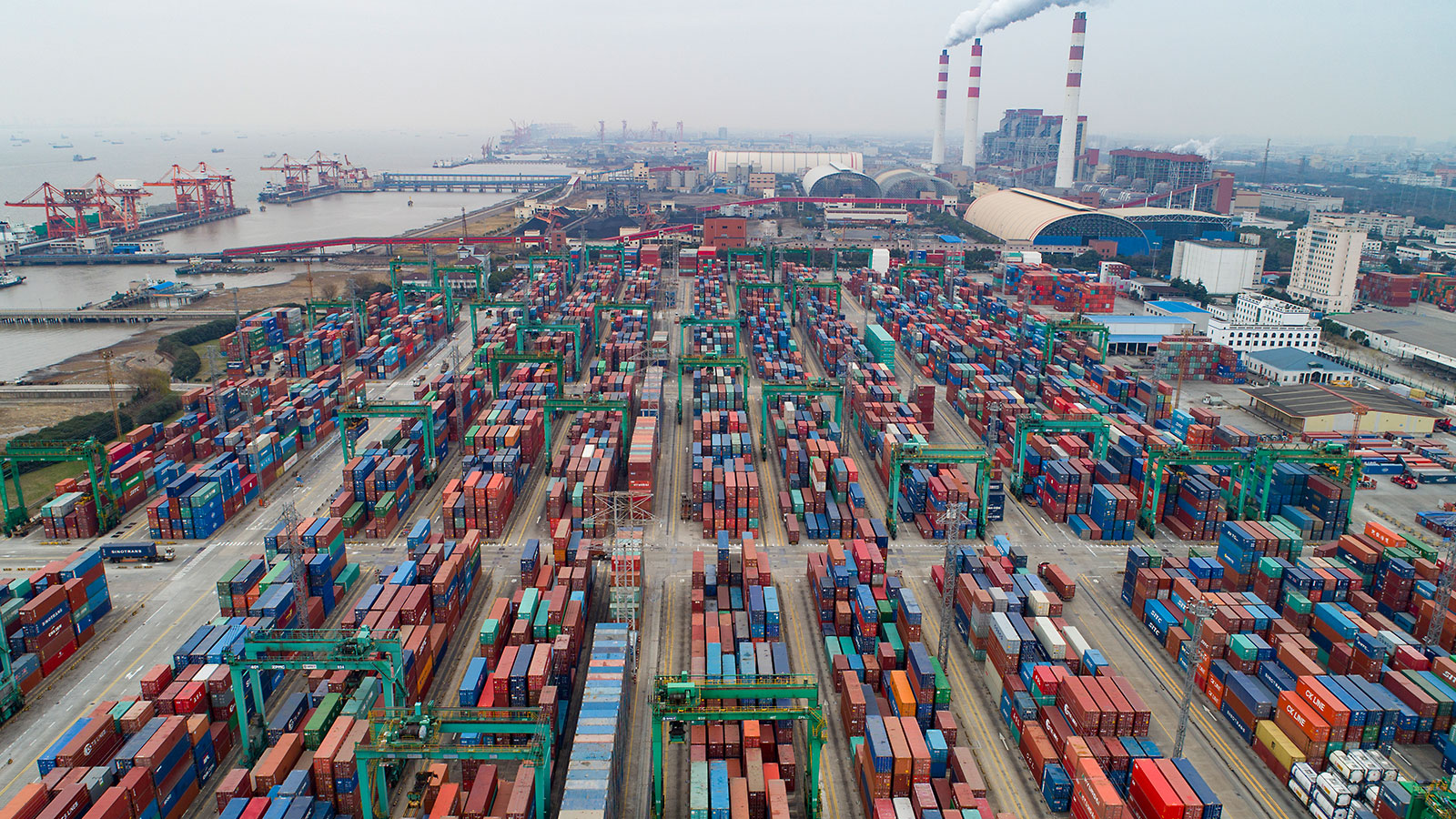Last updated: 4 April 2025
The Trump Administration has announced 'reciprocal' tariffs by imposing an additional 10% baseline tariff on all imports into the US, while goods from many territories are subject to a much higher rate. This will have significant implications for all businesses shipping goods to the US and be especially impactful in an export-focused region like Asia Pacific.
Key points to note:
- Significant country-specific additional tariffs from 10% to about 50% will apply on imports into the US as early as 5 April;
- Some goods, notably pharmaceuticals and semiconductor goods, and those already subject to punitive measures (steel, aluminium, auto) are exempted from these new tariffs;
- Existing tariffs, standard or punitive, remain in place;
- Additional 25% tariffs on goods from territories importing Venezuelan oil expected soon;
- US$800 de minimis exemption for goods from China abolished from 2 May.
- Tariffs could go up or down depending on the response of other territories.
Read on to find out what this and other measures may mean to your business.
New 'reciprocal' tariffs
On 2 April 2025, President Trump invoked his authority under the International Emergency Economic Powers Act of 1977 (IEEPA) to address the national emergency posed by the US’s large and persistent trade deficit. He announced reciprocal tariffs by imposing an additional 10% baseline tariff on all imports into the US, effective from 5 April 2025, with goods from many territories being subject to a higher rate, effective from 9 April 2025.
This executive order is a result of the conclusions of the America First trade policy and Fair and Reciprocal Plan investigations on 1 April 2025. The underlying aim of the administration, as reflected in the title of the executive order, is to rebalance trade between the US and other territories, for example by bringing manufacturing back into the US. The Trump Administration expects the tariff measures to also bring in 'trillions of US$' in revenue collected from these global reciprocal tariffs.
Let’s have a closer look at the impact on Asia. The chart below shows the US reciprocal tariff rates (Annex I) applied to each Asia Pacific territory.

Notes:
1. It is not entirely clear if the tariff rates published in Annex I include the 10% base-line tariff, or whether that base-line tariff applies in addition. The table above assumes the former.
2. Goods from China were already subject to new punitive tariffs of 20% introduced earlier this year, shown in yellow, that remain in effect. With the additional reciprocal tariff of 34%, Chinese-origin imports into the US will now be subject to a total new punitive tariff of 54%.
Clearly the range of applied tariffs is enormous, but at any level it is significant in terms of impact on landed cost into US shores. This reduces the competitiveness of all imported goods in relation to equivalent goods made in the US (which, it should be noted, may still be more expensive in absolute terms even after imposition of these tariffs). It also creates supply chain changes within Asia to a better outcome, provided goods exported from such territories meet the US non-preferential rules of origin.
The reciprocal tariffs are applied across all goods unless specifically exempted (Annex II). Exempted goods include those already subject to punitive tariffs (including steel, aluminum, automobiles and automotive parts), as well as copper, pharmaceuticals, semiconductors, lumber, certain critical minerals, and certain energy goods. Beyond this, tariffs will be implemented consistently across goods, with the origin of goods imported into the US being the determining factor, not the type of good.
Finally, note that only non-US content of imported goods is subject to these tariffs. For goods embedded with US origin content, this content is exempted, provided it is at least 20%. The burden of proof of any claim on embedded US origin content is on the importer. In our experience, many companies may struggle to substantiate it, even though tools are available to track origin by bill of materials (BOM) component.
De minimis and low value imports
While the reciprocal tariffs have taken the limelight, the Trump Administration also announced changes to the de minimis limit for low value imports. This allows shipments of a value below US$800 entry into the US without full formal declaration and without the payment of any duties.
An executive order abolishing this facilitation of affected shipments from China was signed at the start of February but then delayed a few days later pending resolution of operational challenges handling such shipments. These challenges now appear to have been addressed, resulting in the following:
- Removal of de minimis treatment for goods from China (including Hong Kong SAR but not Macau SAR) valued less than US$800 entering the US from 2 May 2025. This means that such goods will need to be declared as normal imports, with standard import duties (including the punitive tariffs mentioned above) being applied.
- Shipments of such goods through the international postal system would still be eligible for simplified clearance, and subject to EITHER an ad valorem 30% duty OR a fixed US$30 (going up to US$50 on 1 June 2025) other shipment. The importer can choose which one to apply, subject to certain conditions.
Note that postal shipments sent as bona fide gifts valued under US$100 from overseas are still exempt from tariff and any other levies.
Venezuelan oil
Earlier in the week, President Trump indicated that he is looking to impose an additional flat tariff of 25% on all goods from territories that import oil from Venezuela. Publicly available up-to-date reliable statistics on this are few and far between. By some indications, China, India, Vietnam and Malaysia could be affected by such measures. Watch this space for emerging details.
What to do?
All businesses involved in the movement of goods into the US, whether directly or indirectly, will be impacted by these changes, whether it is through the US reciprocal tariffs or any retaliatory measures against the US in other territories. We have been telling companies for a long time to make sure they have a good understanding of their international trade flows and map out possible tariff impacts as well as outline possible mitigation options, so that they are ready to act in any eventuality.
Nevertheless, many companies are caught out by the size, the extent and swiftness of the new measures. Still, we believe that companies will benefit from the following structured approach, specifically focused on arriving at no-regrets decisions. Better prepared companies can hit the ground running and start as far down the list as the feel they are.
Immediate response:
- Customs and trade data management: Having robust customs and trade data will allow companies to model and know the impact of new tariffs and the options they have to mitigate such impact.
- Supporting your (non-preferential) origin: Non-preferential origin, a complex concept, has become more important than ever. Detailed analysis and documentation of origin claims is critical to tariff management.
- Efficient customs value pricing (e.g., unbundle, first sale): Reimagine pricing strategies from a customs value perspective. For example, unbundling costs that are not required to be included in customs values to minimise tariff impact.
- Optimise duty and tax management upstream: Take advantage of all duty and tax incentives available in manufacturing locations, import into the US (where available) and optimise free trade agreement (FTA) (US-Singapore FTA) use where applicable.
Longer term response – business model reinvention:
In the longer term, more substantial changes to business can or perhaps should be considered to retain competitiveness and a growth trajectory. This could include:
- Shifting supply chains: Moving production to other manufacturing locations to benefit from lower applied punitive tariffs. Clearly there are many aspects other than tariffs to consider, and any tariff benefit may only be temporary if the US’s trade deficit, in total but especially in relation to the territory with new manufacturing facilities, does not improve.
- Shifting growth trajectory: For many companies the US market has shrunk as a percentage of their overall sales. The new tariffs may accelerate this process, making other consumer markets relatively more attractive. This in turn may require a change in the mix of goods and/or services offered, and how they are offered.
For a more in-depth discussion specific to your business on what this all means for you and what your supply chain strategy should be going forward, please do not hesitate to contact us.
Contact us









